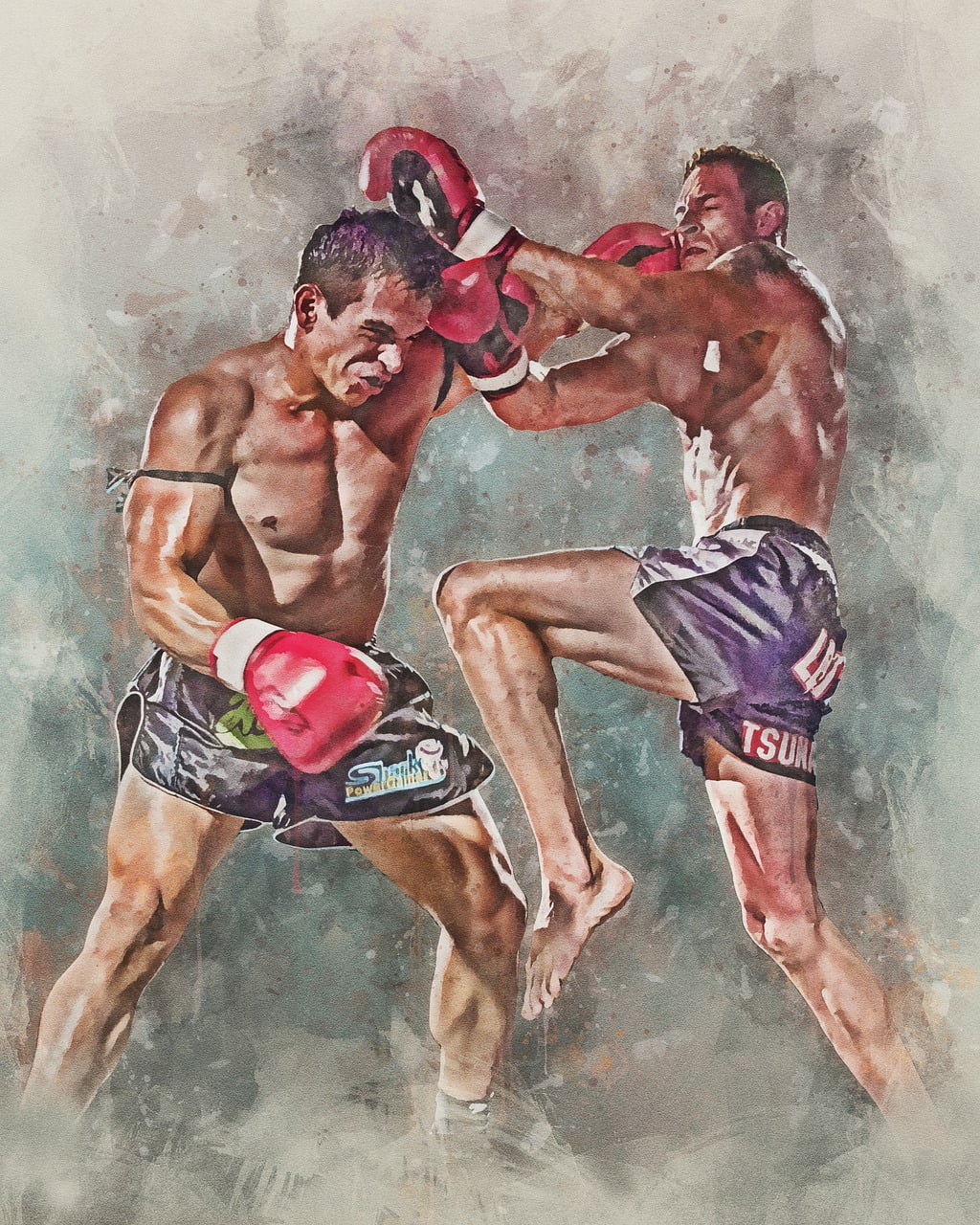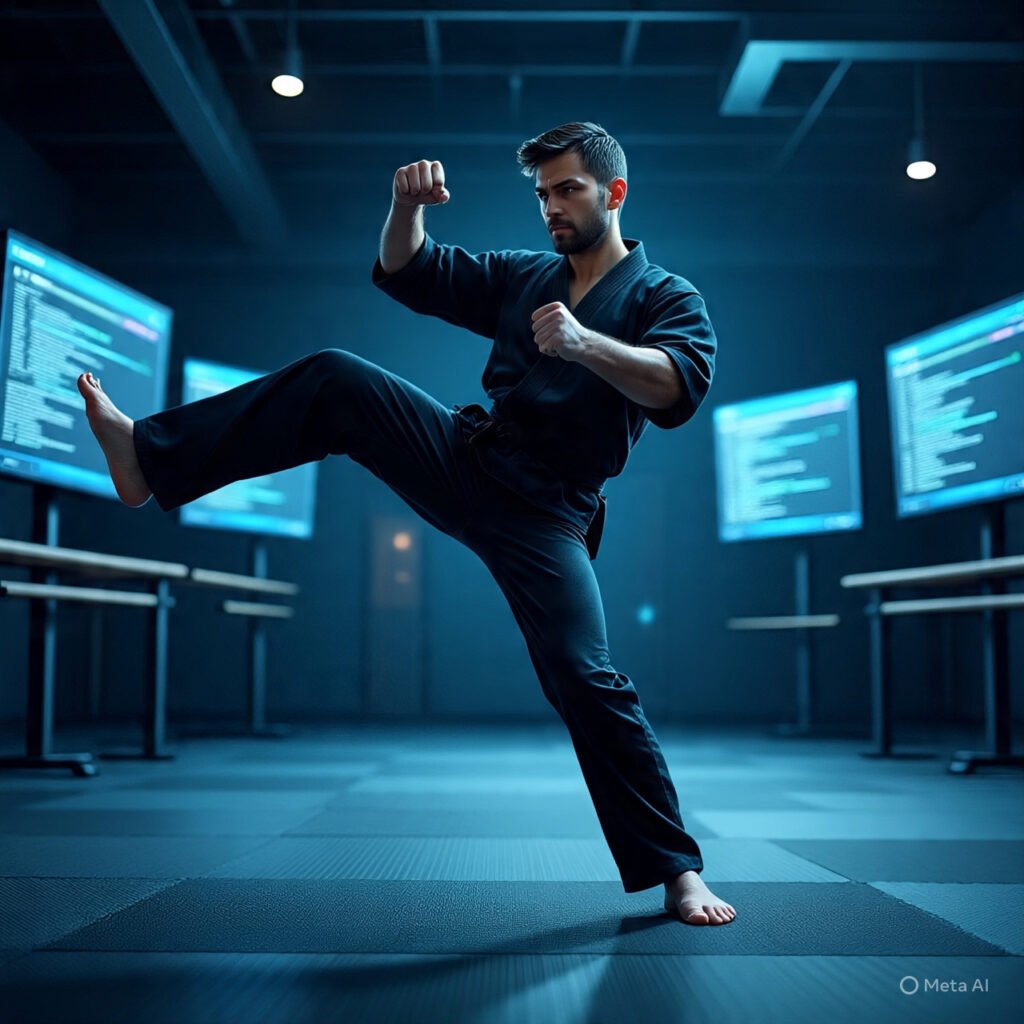Wing Chun, a traditional Southern Chinese martial art, is renowned for its focus on close-range combat, efficiency, and economy of movement. (Wing Chun Theory)
Originating in the Qing Dynasty, it is credited to the Buddhist nun Ng Mui and later refined by figures such as Yip Man.
This martial art emphasizes direct, straightforward techniques that leverage the practitioner’s body mechanics and structure over brute strength.
The core principles of Wing Chun revolve around simplicity, directness, and practical application, making it accessible and effective for individuals regardless of size or strength.
At the heart of Wing Chun lies its unique philosophy, which intertwines martial practice with a deeper understanding of balance, harmony, and mindfulness.
The concept of “centerline theory,” for example, prioritizes protecting and attacking along the body’s central axis, thereby maximizing both defense and offense.
This theory not only informs the physical techniques but also the strategic thinking underpinning Wing Chun.
Another essential aspect is “sticking hands” or Chi Sao, a sensitivity drill that trains practitioners to maintain contact with their opponent, 😀 providing an almost intuitive sense of their movements and intentions.
The traditional training regimen of Wing Chun includes three main forms: Siu Nim Tao, Chum Kiu, and Biu Jee.
Each form builds upon the last, introducing more complex movements and concepts.
Siu Nim Tao focuses on foundational techniques and developing a stable stance.
Chum Kiu incorporates footwork and bridging techniques to close the distance with an opponent.
Biu Jee introduces advanced strikes and recovery techniques.
These forms are complemented by wooden dummy training, which aids in refining precision and power, and weapons training, which includes the butterfly swords and long pole.
Understanding Wing Chun’s historical context and philosophical underpinnings is crucial for appreciating its techniques and applications.
By grounding the discussion in these fundamentals, one can better explore how Wing Chun theory and philosophy might be expanded.
This exploration requires a respectful blend of innovation and adherence to the principles that have made Wing Chun a respected martial art for centuries.

Analyzing the Core Principles
The core principles of Wing Chun form the bedrock of this martial art, guiding its techniques and strategies.
One of the most vital principles is the economy of motion.
This concept emphasizes efficiency, where every movement is purposeful and aimed at achieving maximum effect with minimal effort.
By prioritizing direct and straightforward actions, practitioners can conserve energy and maintain stamina, making them more effective in prolonged confrontations.
Another foundational principle is the centerline theory.
which posits that the imaginary line running down the middle of the body is the most critical area to defend and attack.
By controlling the centerline, Wing Chun practitioners can protect vital organs and maintain balance.
This theory also underscores the importance of occupying and dominating the opponent’s centerline.
minimizing their ability to launch effective attacks while maximizing one’s own offensive capabilities.
Simultaneous attack and defense is another core tenet of Wing Chun.
This principle highlights the martial art’s emphasis on multitasking, where blocking and striking are executed in a single, fluid motion.
This approach not only enhances efficiency but also reduces reaction time, allowing practitioners to neutralize threats rapidly.
The seamless integration of offense and defense turns each encounter into a dynamic engagement.
Ensuring that the practitioner remains a step ahead of their opponent.
These core principles are not merely theoretical constructs but are deeply ingrained in the practical application of Wing Chun techniques.
For instance, the economy of motion can be seen in the straight punches and direct kicks that characterize the art.
The centerline theory is evident in the stance and guard positions, which always prioritize the protection of the body’s central axis.
Simultaneous attack and defense are showcased in techniques such as the “pak sao” (slap hand) and “lap sao” (grabbing hand), where deflecting an incoming strike is immediately followed by a counterattack.
Understanding these foundational principles is crucial for any discussion on expanding or adapting Wing Chun.
They provide a framework that ensures any new techniques or strategies remain true to the essence of the martial art.
By deeply analyzing these core tenets, practitioners can appreciate the underlying philosophy that makes Wing Chun a unique and effective system of self-defense.
Modern Adaptations and Innovations

Wing Chun, a traditional Chinese martial art, has undergone significant transformations over the centuries.
While its core principles remain deeply rooted in the teachings of its originators, contemporary Wing Chun masters have introduced various modern adaptations and innovations to enhance its effectiveness and relevance in today’s world.
These adaptations not only respect the art’s historical essence but also ensure its applicability in contemporary contexts.
One of the most notable changes is the integration of scientific principles into Wing Chun training methodologies.
Modern practitioners often incorporate biomechanics and kinesiology to refine techniques, ensuring movements are both efficient and physiologically sound.
This scientific approach has led to more precise strikes, improved defensive maneuvers.
and an overall enhancement in the effectiveness of Wing Chun as a practical self-defense system.
In addition to scientific advancements, there has been a significant influence of cross-training with other martial arts.
Contemporary Wing Chun masters have explored and integrated elements from Brazilian Jiu-Jitsu, Muay Thai, and Mixed Martial Arts (MMA), among others.
This hybridization has not diluted the core principles of Wing Chun but rather enriched it, offering practitioners a more holistic and versatile skill set.
For instance, the integration of ground-fighting techniques from Jiu-Jitsu addresses a gap in traditional Wing Chun, which primarily focuses on standing combat.
Philosophically, modern Wing Chun has also adapted to the evolving understanding of martial arts’ role in personal development.
Contemporary masters emphasize mindfulness, emotional regulation, and mental resilience, aligning with broader trends in wellness and mental health.
These aspects are seamlessly woven into training regimes, making Wing Chun not just a physical discipline but also a comprehensive approach to personal growth.
Contributions from current Wing Chun masters such as Ip Chun, Wong Shun Leung, and Samuel Kwok have been instrumental in these evolutions.
Their willingness to embrace new ideas while preserving the art’s original essence has catalyzed a renaissance in Wing Chun, ensuring its relevance and vibrancy in the 21st century.
Through these modern adaptations and innovations, Wing Chun continues to thrive, offering practitioners a dynamic and enriched martial arts experience.
Influence of Other Martial Arts

Integrating techniques and philosophies from other martial arts presents a promising avenue for expanding Wing Chun.
The incorporation of diverse styles can introduce practitioners to a broader range of techniques.
enriching their skill sets and enhancing their adaptability in various combat scenarios.
For instance, the fluid movements and evasive footwork of Tai Chi can complement Wing Chun’s direct and linear approach, creating a more dynamic and versatile fighting system.
Similarly, the ground grappling techniques of Brazilian Jiu-Jitsu can address Wing Chun’s traditionally limited ground-fighting repertoire.
providing practitioners with a more comprehensive self-defense strategy.
However, blending different martial arts into Wing Chun is not without its challenges.
The fundamental principles of Wing Chun, such as
centerline theory,
and simultaneous attack and defense,
must remain intact to preserve the essence of the art.
Careful consideration is needed to ensure that any integrated techniques align with these core principles.
Thereby maintaining the integrity of Wing Chun while enhancing its effectiveness.
Furthermore, there is the issue of training methodologies.
Each martial art has its unique training regimen and philosophy.
Integrating these into Wing Chun requires a thoughtful and systematic approach to avoid conflicts and ensure a harmonious blend.
Instructors must be adept at understanding and teaching the nuances of both Wing Chun and the other martial arts being incorporated, ensuring that students receive a coherent and comprehensive education.
In essence, the integration of other martial arts into Wing Chun offers significant potential for expanding its theory and philosophy.
By thoughtfully incorporating complementary techniques and philosophies.
Wing Chun can evolve into a more versatile and effective martial art.
capable of addressing a wider range of combat scenarios while staying true to its foundational principles.
Technological Advances and Training Methods

In the contemporary era, the integration of technology into martial arts training has opened new avenues for expanding Wing Chun theory and philosophy.
Modern technology offers innovative methods to enhance and diversify training approaches.
making Wing Chun more accessible while preserving its core principles.
One notable advancement is the use of training apps specifically designed for Wing Chun practitioners.
These apps provide comprehensive tutorials, interactive exercises, and progress tracking features.
allowing practitioners to refine their skills and techniques at their own pace.
Additionally, they often include detailed explanations of Wing Chun’s theoretical foundations.
ensuring learners understand the philosophical aspects alongside practical training.
Virtual reality (VR) is another transformative technology that can revolutionize Wing Chun training.
VR platforms create immersive environments where practitioners can engage in realistic sparring sessions and simulations.
This not only improves physical conditioning and reaction times but also helps students internalize the spatial and tactical concepts integral to Wing Chun.
By simulating various combat scenarios, VR encourages adaptive thinking and situational awareness—key components of effective martial arts training.
Online platforms have also become invaluable for Wing Chun dissemination, particularly in the context of global connectivity.
These platforms offer access to a wealth of instructional videos, live-streamed classes.
and forums where practitioners can exchange ideas and experiences.
Renowned Wing Chun masters can reach a broader audience.
sharing their knowledge and insights with students worldwide.
This virtual community fosters a collaborative learning environment, promoting continuous improvement and deeper understanding of Wing Chun philosophy.
Moreover, these technological tools ensure that the integrity of Wing Chun is maintained.
Developers and instructors can collaborate to create content that adheres to traditional methods while incorporating modern enhancements.
By leveraging technology, Wing Chun can evolve without losing its essence, offering a harmonious blend of tradition and innovation.
As these technological advances continue to develop, they promise to enrich Wing Chun training.
making this esteemed martial art more accessible and engaging for practitioners around the world.
Philosophical Expansions and Ethical Considerations

Wing Chun, a traditional Chinese martial art, is deeply rooted in a philosophy that emphasizes simplicity, directness, and efficiency.
These principles can be expanded beyond martial applications to address contemporary ethical issues and personal development.
In an ever-evolving modern world, the philosophy of Wing Chun offers a unique perspective that can be adapted to help individuals navigate complex life challenges and promote ethical conduct.
At the core of Wing Chun philosophy is the concept of balance – both in physical movements and in life.
This idea of balance can be applied to contemporary ethical dilemmas, encouraging practitioners to seek equilibrium in their decisions and actions.
For instance, in professional settings, the principles of Wing Chun can guide individuals to act with integrity and fairness, striving for balance between personal gain and the greater good of the community.
Moreover, the discipline and mindfulness cultivated through Wing Chun practice can significantly enhance personal development.
The focus on present-moment awareness and controlled responses to external stimuli translates into better emotional regulation and stress management in daily life.
Practitioners learn to approach challenges with a calm and focused mindset, making thoughtful decisions even in high-pressure situations.
Adapting Wing Chun’s philosophical teachings to modern life also involves fostering a sense of humility and continuous self-improvement.
In a society that often emphasizes competition and external achievements, Wing Chun encourages introspection and self-awareness.
This commitment to personal growth not only benefits the individual but also contributes to creating a more empathetic and ethically responsible society.
Incorporating Wing Chun philosophy into contemporary contexts can provide practitioners with valuable tools for ethical reasoning and personal development.
By embracing the principles of balance, mindfulness, and humility, individuals can navigate the complexities of modern life with greater clarity and purpose.
Community and Cultural Impact

The expansion of Wing Chun theory and philosophy extends beyond enhancing martial skills.
it plays a crucial role in fostering a sense of community and preserving cultural heritage.
As Wing Chun continues to evolve, it acts as a unifying force, bringing together individuals from diverse backgrounds who share a common passion for this martial art.
This collective interest not only strengthens the bond within the Wing Chun community.
but also creates a supportive environment where practitioners can learn, grow, and share their experiences.
Furthermore, the broader cultural impact of expanding Wing Chun theory is significant.
By delving deeper into its philosophical roots and historical context, practitioners gain a richer understanding of the cultural heritage embedded within the art.
This exploration helps preserve the traditions and values that pass down through generations.
ensuring that the essence of Wing Chun remains intact.
As a result, the community is not just practicing self-defense techniques but also maintaining a living link to the past, honoring the legacy of Wing Chun masters.
In addition to preserving cultural heritage, the expansion of Wing Chun philosophy promotes cross-cultural understanding and respect.
As the martial art gains popularity globally, it becomes a conduit for cultural exchange.
Practitioners from different parts of the world come together.
sharing their unique perspectives and interpretations of Wing Chun.
This exchange fosters mutual respect and appreciation for diverse cultural viewpoints.
Breaking down barriers and building bridges of understanding.
By analyzing the broader cultural and community impact of Wing Chun’s expansion.
it becomes evident that martial arts are more than just physical disciplines.
They are vessels of cultural heritage, community building, and cross-cultural dialogue.
The ongoing development and dissemination of Wing Chun theory and philosophy not only enhance the martial art itself.
but also contribute to a more interconnected and culturally enriched global community.
Future Directions and Potential Challenges

As Wing Chun continues to evolve.😁
There is a growing interest in exploring new directions for its theory and philosophy.
One potential avenue for further research is the integration of modern scientific principles into traditional Wing Chun training methods.
By incorporating biomechanics and sports science.
practitioners can gain deeper insights into the efficiency and effectiveness of their techniques.
leading to enhanced performance and injury prevention.
Another promising direction is the expansion of Wing Chun’s philosophical underpinnings.
Traditionally roots in concepts such as simplicity, directness, and economy of motion.
there is scope to explore how these principles can apply to contemporary contexts.
For instance, examining the relevance of Wing Chun philosophy in areas such as
conflict resolution
stress management
and personal development
could provide a richer understanding of its broader applications.
However, the path to innovation is not without its challenges.
One of the primary obstacles is the resistance to change within the Wing Chun community.
Many practitioners and instructors hold a deep reverence for traditional methods.
and may view modifications as a dilution of the art’s authenticity.
Overcoming this resistance requires a balanced approach that honors the heritage of Wing Chun while demonstrating the tangible benefits of new methodologies.
Engaging in open and respectful dialogue is crucial to addressing these concerns.
Creating forums for discussion, such as seminars, workshops, and online platforms.
can facilitate the exchange of ideas and foster a collaborative spirit.
Additionally, empirical evidence supporting new approaches can help alleviate skepticism.
Documenting case studies and conducting research to validate innovative training methods can provide the necessary credibility to gain wider acceptance.
Ultimately, the future of Wing Chun hinges on its ability to adapt and grow while staying true to its core principles.
By embracing both tradition and innovation.
The Wing Chun community can ensure that this martial art continues to thrive and evolve.
offering valuable insights and benefits to practitioners in an ever-changing world.



